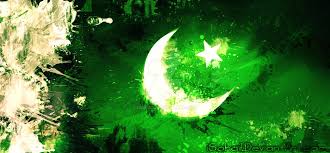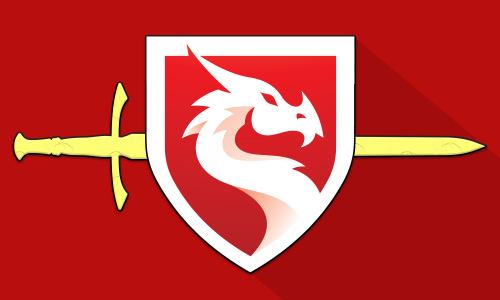This nation is in Vacation Mode for the next 298 turns. This nation cannot be attacked or traded with during that time.
| National Factbook |
| Flag: |

|
| Nation Name: |
Democratic Pakistan |
| Leader Name: |
Aliyan |
| Currency: |

Pakistani Rupee |
| National Animal: |

Elephant |
| History: |
The first government of Pakistan was headed by Prime Minister Liaquat Ali Khan and it chose the seaport of KarÄchi as its capital. Jinnah, considered the founder of Pakistan and hailed as the Quaid-i-Azam (Great Leader), became head of state as governor-general. The government faced many challenges in setting up new economic, judicial, and political structures. It endeavored to organize the bureaucracy and the armed forces, resettle the Mohajirs (Muslim refugees from India), and establish the distribution and balance of power in the provincial and central governments. Undermining these efforts were provincial politicians who often defied the authority of the central government, and frequent communal riots. Before the government could surmount these difficulties, Jinnah died in September 1948.
In foreign policy, Liaquat established friendly relations with the United States when he visited President Harry S. Truman in 1950. Pakistan’s early foreign policy was one of nonalignment, with no formal commitment to either the United States or the Union of Soviet Socialist Republics (USSR), the two major adversaries in the Cold War. In 1953, however, Pakistan aligned itself with the United States and accepted military and economic assistance.
Liaquat was assassinated in 1951. Khwaja Nazimuddin, an East Pakistani who had succeeded Jinnah as governor-general, became prime minister. Ghulam Muhammad became governor-general. Nazimuddin attempted to limit the powers of the governor-general through amendments to the Government of India Act of 1935, under which Pakistan was governed pending the adoption of a constitution. Ghulam Muhammad dismissed Nazimuddin and replaced him with Muhammad Ali Bogra, Pakistan’s ambassador to the United States, who subsequently was elected president of the Muslim League.
In the 1954 provincial elections in East Pakistan, the Muslim League was routed by the United Front coalition, which supported provincial autonomy. The coalition was dominated by the Awami League. However, Ghulam Muhammad imposed governor’s rule in the province, preventing the United Front from taking power in the provincial legislature. After the constituent assembly attempted to curb the governor-general’s power, Ghulam Muhammad declared a state of emergency and dissolved the assembly. A new constituent assembly was indirectly elected in mid-1955 by the various provincial legislatures. The Muslim League, although still the largest party, was no longer dominant as more parties, including those of the United Front coalition, gained representation. Bogra, who had little support in the new assembly, was replaced by Chaudhri Muhammad Ali, a former civil servant in West Pakistan and a member of the Muslim League. At the same time, General Iskander Mirza became governor-general.
|
| Geography |
| Continent: |
Africa |
| Land Area: |
159,163.73 sq. km |
| Terrain: |
Terrain: flat Indus plain in east; mountains in north and northwest; Balochistan plateau in west. |
| Highest Peak: |
Mt.K2,
8,611 meters
|
| Lowest Valley: |
Arabian Sea,
0 meters
|
| Climate: |
mostly hot, dry desert; temperate in northwest; arctic in north |
| People & Society |
| Population: |
2,130,309 people |
| Demonym: |
Pakistani |
| Demonym Plural: |
Pakistanis |
| Ethnic Groups: |
Punjabis - 42.1%
Pashtuns - 17.4%
Sindhis - 14.1% |
| Languages: |
Punjabi - 44.0%
Pashto - 15.0%
Sindhi - 12.0% |
| Religions: |
Islam - 96.4%
Christianity - 1.6%
Hinduism - 1.6% |
| Health |
| Life Expectancy: |
66 years |
| Obesity: |
22.2% |
| Alcohol Users: |
0% |
| Tobacco Users: |
0% |
| Cannabis Users: |
0% |
| Hard Drug Users: |
0% |
| Economy |
| Description: |
The emerging market group continues to grows at 4.2 percent this year and 4.6 percent next year. The growth advantage over advanced economies is smaller than before.
Emerging markets are also undergoing transitions of their own shifts that create challenges but also opportunities.
|
| Average Yearly Income: |
$172.75 |
| Gross Domestic Product (GDP): |
$5,325,223,261.00 |
| GDP per Capita: |
$2,499.74 |
| Gross National Income (GNI): |
$3,590,610,485.00 |
| Industries: |
Automotive Industry
The automobile industry in Pakistan includes companies involved the production/assembling of passenger cars, light commercial vehicles, trucks, buses, tractors and motorcycles. The auto spare parts industry is an allied of the auto industry. The auto & allied industry form a major sector in Pakistan.
There are 12 automobile companies listed on the Karachi Stock Exchange under the sector of Auto & Allied. The car industry in Pakistan primarily comprises of four players, all of which are Japanese. These are Pak Suzuki Motor Company Ltd., Indus Motor Company Ltd., Honda Atlas Cars Ltd. And Ghandhara Nissan Ltd. Amongst these, the first players comprise the major position in the market. Naya daur Motors are the manufacturers of Kia. The market for Buses and trucks include Hino-Pak Motor, National Motor, Ghandhara Nissan Diesal etc. The tractors market comprises of Al-Ghazi Tractors, Millat Tractors.
Agriculture
Agriculture constitutes the largest sector of our economy. Majority of the population, directly or indirectly, dependent on this sector. It contributes about 24 percent of Gross Domestic Product (GDP) and accounts for half of employed labour force and is the largest source of foreign exchange earnings.
It feeds our whole rural and urban population. Realizing its importance, planners and policy makers are always keen to have reliable area and production statistics of agricultural crops well in time. Policy makers primarily need accurate and timely statistics for the important crops such as wheat, cotton, rice, sugarcane, maize etc. However, in recent years, due to persistent hikes in the prices of essential commodities like pulses, onions, potatoes, chillies and tomatoes these crops have also gained in economic importance.
In 2005, Pakistan produced 21,591,400 metric tons of wheat, more than all of Africa (20,304,585 metric tons) and nearly as much as all of South America (24,557,784 metric tons), according to the FAO.[67] The country was expected to harvest 47 to 64 million tons of wheat in 2015. Pakistan has also cut the use of dangerous pesticides dramatically.
Mining Industry
Mining is an important industry in Pakistan. Pakistan has deposits of several minerals including coal, copper, gold, chromite, mineral salt, bauxite and several other minerals. There are also a variety of precious and semi-precious minerals that are also mined. These include peridot, aquamarine, topaz, ruby, emerald, rare-earth minerals bastnaesite and xenotime, sphene, tourmaline, and many varieties and types of quartz.
The Pakistan Mineral Development Corporation is the responsible authority for the support and development of the mining industry. Gemstones Corporation of Pakistan looks after the interests of stake holders in gemstone mining and polishing as an official entity. Baluchistan province is the richest in mineral resources available in Pakistan. While recently Sindh discovered coal deposits in Thar. |
| Military |
| History: |
Led by General Qamar Bajwa.
Use of all forces including Missiles and Nukes will be done in order to defend the nation.
If you attack, we will retaliate you, our response will be different and we'll surprise you just like we have in past.
|
| Soldiers: |
0 |
| Tanks: |
0 |
| Aircraft: |
0 |
| Ships: |
17 |
| Missiles: |
2 |
| Nuclear Weapons: |
0 |
| Last Updated: 06/03/2021 07:05 pm |



















